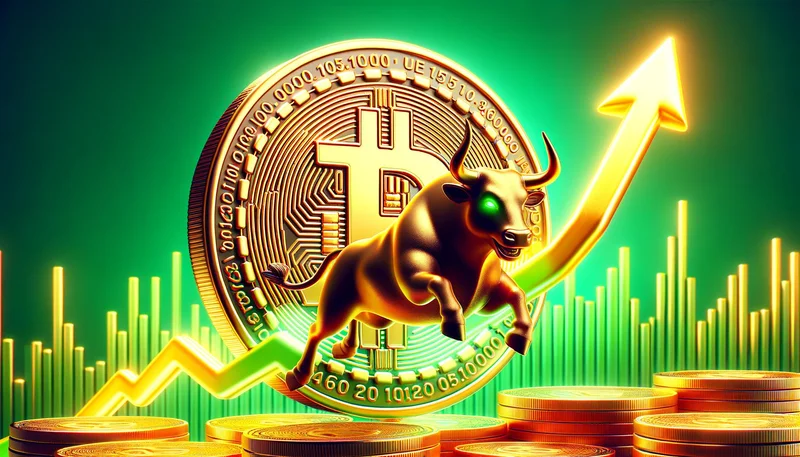Article Directory
At precisely 21:00 UTC on October 10, 2025, the digital ticker for Dogecoin began to flicker erratically. On screens across the world, the familiar green candles gave way to a single, brutal red line plunging downward. In a matter of minutes, the price collapsed from a stable $0.22 to a gut-wrenching low of $0.11 on the Bitfinex exchange—a 50% vaporization of value (as reported in DOGE Price News: Dogecoin Suffers 50% Flash Crash).
The immediate narrative, predictably, wrote itself. "Meme coin implodes," the headlines would scream. "Speculative bubble finally pops." It’s the easy, satisfying story: an asset born from a joke finally succumbs to the gravity of the real world. But a dispassionate look at the data from that chaotic evening tells a different story entirely.
This wasn't the death rattle of a frivolous digital token. It was a violent, surgically precise flush-out of leveraged players, triggered by a macro-economic shockwave. And what happened in the moments and hours after the crash reveals a fundamental shift in how this asset is perceived and, more importantly, who is accumulating it. The data suggests this wasn't a retail panic; it was an institutional shopping spree.
The Anatomy of a Liquidation Cascade
Let's be clear about the catalyst. The crash wasn't triggered by a flaw in Dogecoin's code or a loss of faith from its community. The spark was lit in Washington, D.C., with the Trump administration's sudden announcement of a 100% tariff on Chinese imports. The resulting cross-market selloff was immediate and indiscriminate, hitting equities and digital assets alike. The broader crypto market saw a massive liquidation event, with estimates ranging from $7 billion to $20 billion in leveraged positions being wiped out.
Dogecoin was caught in this downdraft, but its fall was amplified by its own market structure. The 50% price drop was a textbook liquidation cascade. This isn't like a ship slowly taking on water as investors lose faith. It’s more like an algorithmic traffic jam. When the price dips below a certain threshold, automated margin calls are triggered, forcing sales. These sales push the price down further, triggering the next wave of margin calls in a brutal, self-reinforcing loop. The failure of automated cross-venue arbitrage systems to keep prices aligned across exchanges only exacerbated the problem, allowing for the extreme low of $0.11 on a single venue.
The numbers from that day are stark. Trading volume surged to 4.6 billion DOGE, a jump of over 200%—to be more precise, 206% above its daily average of 1.5 billion. The intraday volatility hit 57%, a high for the year. On the surface, this looks like pure chaos. But chaos often masks opportunity, and the on-chain data shows exactly who seized it.

The Buy-Side Response: An Institutional Footprint
While the leveraged traders were being wiped out, a different class of market participant was stepping in. The price didn’t just bounce off the bottom randomly; it was met with a wall of methodical buying that absorbed the panic selling and established a new floor around the $0.19–$0.20 level. This wasn't the work of retail investors "buying the dip." The scale was far too large.
The evidence points to a distinctly institutional footprint. First, we have the role of the recently launched 21Shares institutional DOGE ETF (ticker: TDOG). This regulated vehicle provided the perfect, compliant on-ramp for funds to gain exposure without directly holding the asset. Reports indicate that ETF-related flows were a primary force in stabilizing the price. This is the new financial plumbing for crypto at work.
Second, on-chain data clearly shows large holders, or "whales," were aggressively re-accumulating during the crash. While smaller wallets were panic-selling, the largest wallets were buying. And this is the part of the data that I find genuinely telling: we saw exchange outflows for DOGE top $23 million in the aftermath (a figure that likely understates the true total). This isn't day-trading behavior. Moving coins off an exchange into a private wallet is a strong signal of a long-term holding intention.
Most concretely, an estimated 2 billion DOGE were added to known corporate wallets in the 24 hours following the crash. Think about that. While the public narrative was focused on the collapse, sophisticated entities were quietly acquiring hundreds of millions of dollars' worth of the asset at a discount.
This pattern—a leverage-driven crash followed by quiet, large-scale accumulation—is a hallmark of a maturing asset. The weak, over-leveraged hands are forced to sell to the strong, deep-pocketed hands. But it raises a critical question that the data doesn't fully answer: Was this an organized accumulation strategy by a handful of large funds, or was it a decentralized, opportunistic response from a wide range of institutional players who now view DOGE as a legitimate macro asset? And what does their valuation model look like that made a 15-20% discount so attractive for a multi-billion dollar capital allocation?
A Transfer of Ownership
The events of October 10th weren't a story about a joke coin failing. They were the story of a violent, multi-billion-dollar transfer of an asset from one class of owner to another. The macro-induced panic served as the mechanism to shake out over-leveraged retail and derivative traders, allowing institutional capital and corporate treasuries to establish significant positions at a discount. The crash was, in effect, the price of admission for a new, more sophisticated set of stakeholders. The "meme" has become a systematically traded asset, and this flash crash was simply the cost of doing business.
